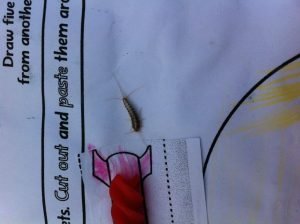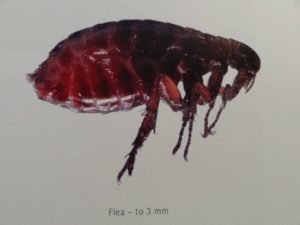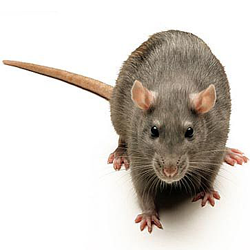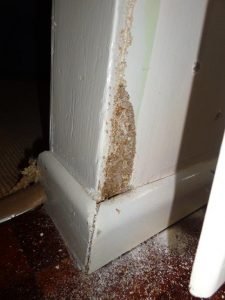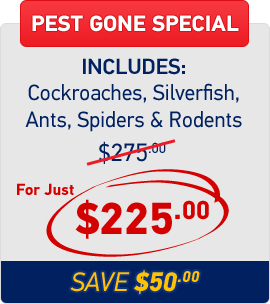Pest Control – Cockroaches – Silverfish – Spiders – Rodents – Termites – Bed bugs
[separator top=”-55″ bottom=”10″ style=””]
Pest Control
Best 1 Cleaning & Pest Control is a fully licensed company. We ensure our customers get the best quality in service available. We use environmentally friendly products. In addition, we do a thorough inspection of the premises before tackling any pest problem and keep our customers up to date with any problems we may find. Best 1 will advise on the type of treatment we think is necessary for each service. Some jobs just need a general pest spray, where as others may need a more extensive service. We are only too happy to explain the products we use. Here is a brief description of some of the pests we cover.
Cockroaches
Cockroaches: There are approximately 428 species in Australia; they have a gradual metamorphosis. These insect are despised, mainly owing to the success of a handful of the species that have entered the environment in which humans live and work. These few species are scavengers, and can cause infestations within homes. Adults and nymphs mainly come out during the night and are not often seen during daylight hours, unless there is a heavy infestation of a property. They can be forced out during the day light because of the amount of cockroaches in one place.
Silverfish
Silverfish: There are approximately 28 species in Australia; there metamorphosis is primitive. This order includes some of the most ancient insects. Silverfish have flat bodies and nearly all the species are covered in tiny scales. Like cockroaches, silverfish are out of sight during the day, and become more active at night. They can run fast and are very agile. Around five species of silverfish have become a problem in homes, feeding on and damaging books, paper and clothing.
Spider
Spiders: Spiders can have 3-4 pairs of eyes, situated on the side and top of the cephalothoraxes, but some only have 1-2 pairs. Most spiders are nocturnal; they are not often seen during the day. They become active at night when in search of food, leaving their burrows, or in the case of web-spinning spiders, construct a web to catch their prey. Most spiders will return to their burrows or shelter once day breaks. Spiders are carnivorous, mostly feeding on freshly killed insects. Cannibalism among arachnids is establish from a very early age. They will kill and eat one another and more so when there is a shortage of food. The one thing humans fear with spider is the bite; most spider bites result in nothing more than localised swelling or irritation. A spider that inflicts a deep wound can introduce bacteria to the blood stream and cause septicaemia, but this is very rare.
Fleas
Fleas: There are approximately 90 species of fleas in Australia; they belong to the order Siphonaptera. Fleas are known for their biting habits. They can become unwelcome guests of homes and offices. In some cases, a flea problem may be difficult to control without the assistance of the occupants of the building. A good understanding of the biology of fleas is important to gain effective control over a flea infestation. When a building has a flea problem and there are also animals living there, they too should be treated at the same time with a regular flea treatment by the owner, or the problem could persist. Fleas prefer a warm humid environment; this is why they become a pest during the summer months.
Rodents
Rodents: Rates and mice are social animals and live in groups, in nests made from any soft materials available. They can nest near to water ways or under buildings, in trees, rubbish dumps and other places where food and shelter are within close proximity. They are very adaptable, omnivorous scavengers. They may be seen during the day if the population is large or there is a food shortage and if there is little disturbance or danger. Both rats and mice are very good climbers and can scale rough walls, pipe work, trees etc. When rats and mice are at rest they will groom themselves. This can be an effective tool in the control of rodents. With the aid of toxic powders put down on surfaces that they may come in contact with.
Termites
Termites: There are over 300 species of termites in Australia, which are generally grouped according to their feeding behaviour. The commonly used general groupings are subterranean, soil-feeding, dry wood, damp wood and grass eating. Of these, subterranean and dry woods are primarily responsible for damage to human-made structures. Technicians should be able to recognise the main pest species with the aid of a hand lens. But the accurate identification of termites is best done by an entomologist specialising in termites. For the identification of termite species, the soldier caste has the most obvious characteristics. Several families of the Epifamily Termitoidae are represented in Australia. The most primitive (oldest in evolutionary terms) is the giant northern termite, Mastotermes darwiniensis.
Bed Bugs
Bed bugs: Bed bugs typically stay out of sight during day light hours and are more active during the night. They are attracted by the body heat of the host. After the meal they will return to where they harbour during the day. This would be close proximity to the bed. Male, female and nymphs are all bloodsuckers. Their most important host is humans, but in some cases bats, cats and other animals may serve for feeding. Where an establish infestation of bed bugs is found, an improvement in hygiene will be necessary backed up with a chemical treatment.


